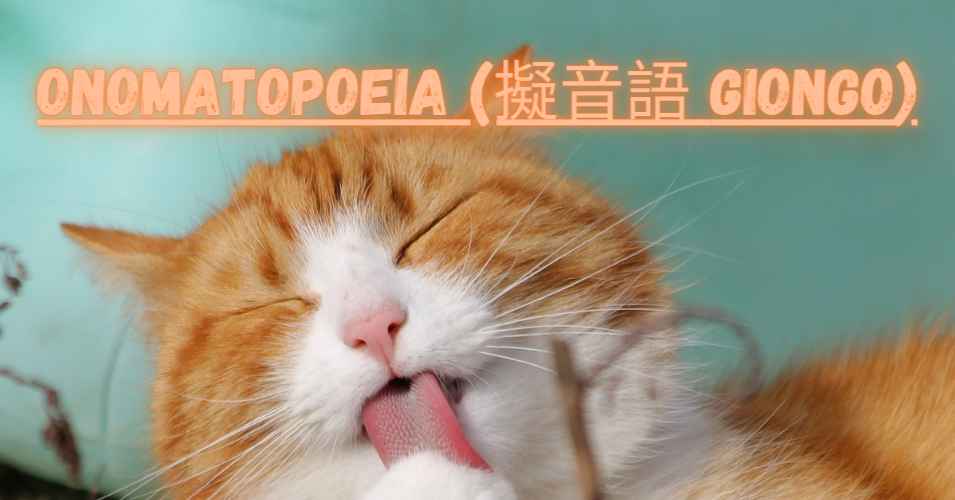One of the most distinctive features of the Japanese language is its wide variety of onomatopoeia.
What is Onomatopoeia (擬音語 giongo)?
Onomatopoeia (擬音語 giongo) are words that mimic sounds associated with things or actions. In English, tick-tock (the sound of a clock) or ribbit (the sound of a frog) are classic examples of such words. Similar words exist in Japanese. Here are a few:
- ケロケロ frog
(Ex.)かえるがケロケロと鳴った。
=The frog croaked.
- ニャン meow
- ヒヒーン a horse’s neigh
- ガタガタ clattering
- ドンドン drumming/pounding (e.g. a door)
(Ex.)酔っ払いがドアをどんどんたたいていた。
=A drunkard was battering at the door.
- ドカン boom
(Ex.)爆弾がドカンって爆発した。
=The bomb exploded with a boom.
How to Memorize It?
As you may have noticed, many Japanese onomatopoeia feature syllable duplication and are either written using either hiragana or katakana. This makes onomatopoeia particularly easy to remember.
On the other hand, the share volume of such words might make it hard to distinguish between words that sound similar (e.g. バラバラ scattered vs. パラパラ sprinkling). One of the best strategies not to mix similar words is to learn by context. Try to always learn a new word within a sentence, so that the meaning becomes more memorable. Books and native audio (podcasts, TV shows, movies, etc) are the perfect media to learn in this fashion.
Two Types of Onomatopoeia
Unlike languages like English, Japanese onomatopoeia is not necessarily childish or cartoonish. These are common words that may be used every day, in all sorts of social situations. Just don’t overuse them, so that it doesn’t become a bad habit (悪癖 akuheki).
In fact, Japanese distinguishes between two types of onomatopoeia: pure onomatopoeia representing acoustic sounds (擬音語 giongo) and idiophones (擬態語 gitaigo or 音喩 onyu), words that represent concepts, states of mind, etc, that have no acoustic manifestation in the real world. Other languages that feature idiophones are Haitian Patois and the Creole languages of São Tomé and Principe.
Let us take a look at a few examples of idiophones in Japanese:
- へとへと exhausted
(Ex.)走ってヘトヘトになった。
=I ran and became exhausted.
- ハラハラ to feel anxious
(Ex.)はらはらしながら審査の結果を待っていた。
=I had been waiting for the results of the screening with anxiety.
- ラブラブ lovey-dovey (literally: love-love).
(Ex.)優さんと旦那さんってラブラブですね!
=Yuu and her husband are really in love!
As you may have noticed, these last words (idiophones) do not represent sounds that we are able to hear in the real world. Nevertheless, they act grammatically as onomatopoeia and are an essential component of a native speaker’s lexicon. They are also quite common as sound effects in Manga.
Incorporating these words into your vocabulary will make you sound more proficient and natural whenever you speak Japanese. So, the next time you encounter an onomatopoeia, don’t be afraid of making mistakes and hearing the bu-bu ブブーッbuzzer: soon you’ll be pera-pera ペラペラ (fluent)!
Introduction of the Author
This article was written by André Pinto Teixeira, a Portuguese translator and author. Even though he is a foreigner, his Japanese level is as good as a native speaker.
If you are interested in his literary work, please visit his Instagram.

FREE Training for JLPT
If you want to pass JLPT, we are always with you. Our Japanese learning platform offers you various learning FREE materials (N5〜N1), such as Dashboard to manage your study time, Flashcard for Word, Mini test, Lecture, and Training of Vocabulary&Grammar, Reading and Listening.
© 2022 GLOBAL ASTRA Inc. All Rights Reserved.

We offer the Best Online Japanese Learning (All Free), and our goal is to facilitate the adoption into life in Japan. Our service “IPPO” is made by native Japanese teachers and professionals. The tips we share with you can help you to learn Japanese efficiently and pass JLPT (Japanese Language Proficiency Test).




